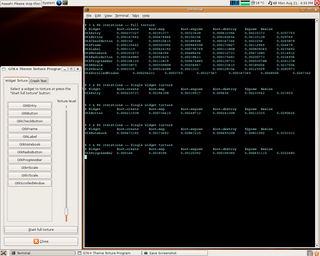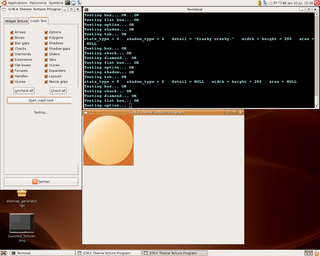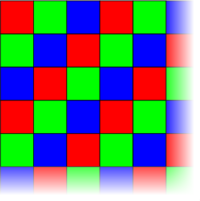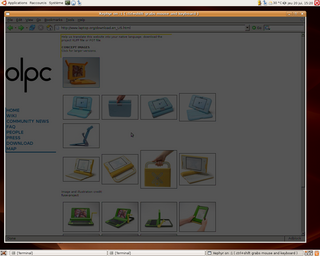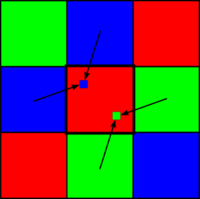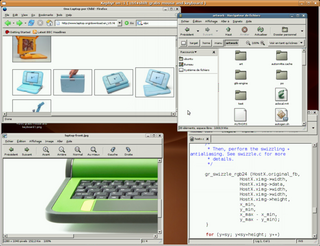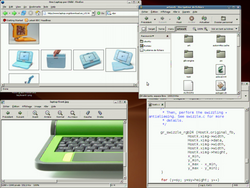GTK for OLPC
This is the wiki page for the "GTK+ for OLPC" project, as a "Summer of Code" project. The student is Manu Cornet, mentor is Federico Mena-Quintero. You can find the initial goals of the project on the OLPC Google Summer of Code page. And here is the git tree of this project (with all the code).
If you want to checkout the code for this project, just do:
git-clone git://dev.laptop.org/projects/soc-gtk
GTK theme/engine torturer and crash tester
The application
This "gtk-theme-torturer" is an application to detect performance issues in GTK themes/engines. It does two things:
- For each of the most common widget types (very easy to add some more), it packs an instance of it in a container, and resizes/redraws it many, many times. You can set a "pain level" to determine the number of times widgets will get redrawn while scaling.
- It takes each one of the gtk_paint_* functions (implemented by the engines themselves) and tries all possible parameters configurations, including unusual values to see if the engine crashes.
The program also outputs detailed time measures (thanks to Federico's widget profiler infrastructure, which I tweaked a bit for the torturer). It also supports an non-interactive mode (thanks to Fernando Herrera) on the command-line, and XML output (thanks to Frederic Peters). You can get the code from the project's git repository.
A few observations
I have made a small analysis on a few themes' performance, see the results (spreadsheet) and the original mail mentioning the results.
Simulation Tools
Color swizzling and antialiasing
I made a hack for Xephyr to let it emulate "color swizzling". The laptop's DCON chip basically only selects the red signal for the first pixel, the green signal for the second pixel, etc., following this pattern :
The swizzling mode also performs a very simple antialiasing filter on the image, the matrix of which is :
| 1/8 | ||
| 1/8 | 1/2 | 1/8 |
| 1/8 |
Postprocessing
Due to the fact that the swizzling mode discards 2/3 of the signal, the output is very dark:
In order to 'correct' this and get a luminosity that is relatively faithful to the real OLPC display, a postprocessing step (thanks to David Turner) restores, for each pixel, the two lacking color components. For a red pixel for instance, compute the average of the green pixels on its right and below it, and the average of the blue pixels on its left and above it:
Thanks to this postprocessing, we can get much better visuals (click to enlarge):
The patch is here, or directly inside the project's git tree (simulation subdirectory). Apply it to the hw/kdrive/ephyr directory. It adds a '-swizzle' option to Xephyr to switch between the two modes (since 16 bit colors are closest to what the OLPC display will do, the '-swizzle' option automatically switches the server's depth to 16.
Shrinking
The OLPC screen is very small, and has a resolution twice as high as our usual displays. Based on these observations, a "shrinking" process takes a 1200 x 900 pixels image and creates a 600 x 450 pixels image by reducing each group of four pixels into on as follows. For example, with a group of four pixels like this:
thus averaging the two blue pixels among the four (same process for other cases).
The shrunk version of the above screenshot looks like this (click to enlarge).
Shrunk images are a good preview of what the display would look like at a normal distance. If you measure their width on your screen, you shouldn't find something very far away from 15 cm (probably even a little larger). The unshrunk, swizzled images are a good preview of what you would see if you had a closer look, but of course they don't have the right visual dimensions.
Review of theme elements on OLPC display
This page shows a fairly extensive review of various GTK theme elements / graphic elements (fonts, thin lines, buttons, etc.) and how they would look on the OLPC display, using the simulation tools mentionned earlier.
GTK+ theme engine
One of the initial goals was to write a GTK theme for the OLPC. However, the whole UI being redesigned nearly from scratch, it would have been useless for me to work on the current theme's code (which will be discarded anyway).
However, I investigated a bit on which existing engine could be a good basis for the future theme. It turns out (after chatting with the gnome-art/gnome-engine guys, Federico, etc.) that ThinIce is a pretty good choice, with probably a few elements from ClearLooks.
Earlier in the project, I hacked the current theme (see the artwork module here) by first making it more crash-proof with the torturer: here is a short log about this. Then I made some time measurements (see the torturer section, above) to compare it with ClearLooks/Human/HighContrast.
Minor enhancement: cursor blinking
I began with this (quite simple to do). The purpose is to let the cursor blink for a few seconds, then just stay on and stop blinking (affects GtkEntry and GtkTextView).
This is done by :
- Adding an XSetting called "gtk-cursor-blink-lifetime", which defaults to 5 seconds.
- Adding a timeout with the corresponding lifetime each time the code asks the cursor to begin blinking. When the timeout is over, the cursor stays on.
A final version of the patch (both for GtkEntry and GtkTreeView) is available here.
